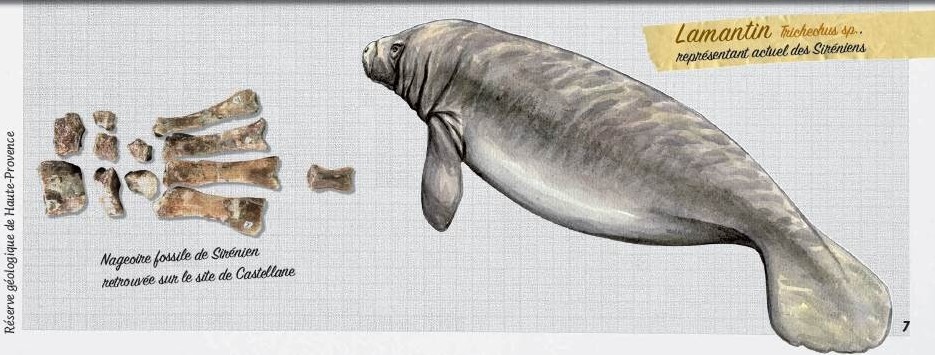The material and landscape adventure> Stone in all its forms
Step 2

alt_route Sirenians website
The sirenian trail allows you to discover a unique site with preserved bones, 35 million years old. These fossilized remains are those of sirenians, distant relatives of dugongs and manatees.
If the sirenians of Taulanne, marine animals, are found today at nearly 1200 m of altitude, it is because the sediments accumulated at the bottom of the sea of the time and those which then covered them, were buried, transformed into rock, then deformed and carried in altitude during the uplift of the Alps (phenomenon of elevation of the rocks of the Alps).
Watch an augmented reality sequence!
Hike Site des Siréniens
Level: Very easy
Duration: 1 hour 30 minutes
Type: Round trip
Length: 4 km
Elevation gain: 142 m
Departure / Arrival: Col des Lèques car park
More informations: https://www.rando-alpes-haute-provence.fr/randonnee-pedestre/site-des-sireniens-mammiferes-marins-fossiles/
Learn more
Sirenians
Sirenians are the only herbivorous aquatic mammals. Their confusion with the legendary sirens by the sailors who saw them for the first time, earned them their name.
Their bulky body is tapered and ends in a flattened tail. Their forelimbs are transformed into fins.

Sirenians are the closest relatives of Proboscidians, elephants! Many characteristics of their skeletons and their morphologies are common to both groups and certainly inherited from the same ancestor. For example, some species of manatees have nails, reminiscent of those of elephants.
Nowadays, the sirenians, nicknamed “sea cows”, are only represented by 4 species including the African, Amazon, and Caribbean manatees that live in coastal waters and in some rivers in tropical areas. , as well as the Dugong present in the coastal waters of the Indian Ocean and the Pacific.